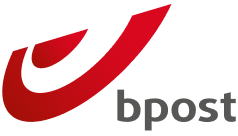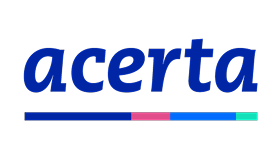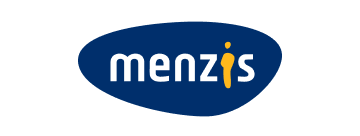Team up
for digital change
We provide comprehensive business consultancy and tailored IT solutions. We pride ourselves on a no-nonsense and people-first approach.




Team up
for digital change

The future is built on collaboration
Let’s create success, together.


Digital transformation for innovative companies
Bridging the gap between ambition and results
Our consultants are more than just digital specialists; they are strategists who understand your business from every angle.
We combine proven digital expertise with human-centered methods to successfully guide your business into the digital future. Our motto? Driving transformation, faster, better.
Experts in complex integration challenges
A practical integration platform promotes seamless data exchange, better client and employee experiences, and always-on access to crucial business information.
Our integration specialists make your IT landscape future-proof and ready for the artificial Intelligence revolution.
Your own application landscape of smart and fast apps
Standard packages are excellent, but sometimes they fall short. We build tailormade applications that fit your unique demands exactly.
With OutSystems, we build a customized application landscape for your ambition. Low code, high performance: applications your team loves to use and that deliver a clear return on investment.
Personalised communication tailored to your customers
No two clients are alike. Some prefer physical mail, while others rely entirely on app or email updates.
With CustomerConnect we offer a digital tool to take care of personalised communication that feels unique to every customer, whether delivered through the letterbox or digital channels.
We measure success by the positive change we create
Let's build success stories, together.

Trusted by










Our insights
All articles
When digital transformation (DX) processes are difficult, this is certainly not always due to technical or budgetary restrictions. In fact, when we search for data points, we've recently seen that only 35% of companies worldwide achieved their DX goals (BCG, 2021) — a sobering figure that shows that a fundamental piece is often missing.
This missing piece? Sometimes this is a thoughtful and proven process approach. Because organizations that do succeed make a smart combination of technology and recognized process optimization methods such as Lean, Six Sigma, Agile and Design Thinking.
What is digital transformation really?
Digital transformation is more than implementing new technology. It's a fundamental review of how organizations create value, supported by digital tools.
It's about:
- Process automation
- Data-driven decision making (which is crucial, as 73% of consumers expect improved personalization as technology advances, Salesforce, 2024)
- New (digital) customer interactions
- Innovative business models
But without a clear process approach, digitization can lead to accelerated chaos instead of measurable improvement.
The power of process methods in DX
Here's how proven methodologies add value to digital projects:
1. Lean: Eliminate waste before digitizing
Lean focuses on eliminating waste and maximizing customer value. In digital processes, Lean helps to identify inefficient processes before they are automated.
- Value Stream Mapping to discover bottlenecks and waiting times.
- Focus on a culture of continuous improvement (Kaizen).
- Minimizing unnecessary steps in digital workflows
Achieve companies with effective change management programs (a pillar of Lean and Agile) medial 143% of expected ROI (McKinsey).
So clean up first, then digitize!
2. Six Sigma: Ensuring Quality and Consistency
Six Sigma is focused on reducing variation and improving the quality of the end product. By using data analysis and the DMAIC (Define, Measure, Analyze, Improve, Control) cycle, digital processes can measurable and sustainable are being improved.
- DMAIC apply to digital workflows to eliminate errors and rework to reduce.
- Data-driven approach: Organizations that implement Six Sigma correctly see on average, a return of $230,000 per project and an ROI of 4.5 to 6 times on their training investment (Sixsigma.us).
3. Agile & Design Thinking: Flexibility and People Focus
- Agile ensures rapid iteration, continuous feedback and collaboration between teams, which is essential in the rapidly changing digital world.
- Design Thinking puts the end user first and helps design intuitive digital solutions. The goal: better adoption.
Companies that use Design Thinking focus on understanding user needs. This is crucial because 41% of organizations invest in DX without properly examining their customer needs (Prophet, 2019), which often leads to adoption disappointment.
The consultant as strategic process director
As a consultant, you can use these methods strategically in each phase of a digital transformation process:
.png)
Regardless of the role you play in the digital transformation project where you are working as a consultant, it is always interesting to keep the above process methods in mind.
- Lean: try to identify the processes that your project has an impact on and identify waiting times and unnecessary steps.
- Six Sigma: view the product delivered by the project you are working on, what is the amount of rework there? What is the quality of the end product? Does each product have the same level of quality (variation)?
- Design Thinking: make use of Design Thinking techniques when you attend workshops that look for solutions.
- Agile: An agile way of working ensures rapid development of the certain solutions, and rapid feedback loops also help with rapid deliveries.
Practical example: the HR app implementation
Imagine: as a Digital Transformation consultant, you supervise the implementation of a new HR app (paysheet, absences, etc.).
- Lean: You start with a Value Stream Map of the current process. You discover two redundant approval steps and four days of waiting time in the leave application process. These steps are eliminated before digitization.
- Six Sigma: During the test phase, you analyze data. You note that 15% of applications are submitted incorrectly due to confusing input fields. You apply the DMAIC method to analyze the source of error, improve the interface and reduce the error rate to less than 5% (the Six Sigma Standard).
- Design Thinking: You organize workshops with the end users to co-create the interface. By using personas and Journey Mapping, you design an app that is intuitive, which means adoption accelerates by 25% in the first month.
- Agile: You're using Scrum. Each sprint provides a working element. User feedback from last week will be incorporated into the next sprint, so that the solution perfectly meets the need.
Conclusion
Digital transformation is not a goal in itself, but a means of creating measurable value. Integrating Lean, Six Sigma, Agile and Design Thinking enables consultants to:
- Avoiding waste (Lean).
- Guaranteeing quality and ROI (Six Sigma).
- Achieve higher user adoption (Design Thinking).
In short: Optimize first, then digitize. Only then can you achieve sustainable change, satisfied customers and measurable impact.

The healthcare sector faces immense challenges. An ageing population, rising costs, and acute staffing shortages demand fundamental change. The solution lies not only in more hands-on care, but also in smarter processes and effective use of technology. This is where the power of apps and applications in healthcare becomes indispensable.
But how do you navigate, as a CIO, IT manager, or architect, through this complex landscape of technological possibilities? Which use cases are most relevant for your organisation, whether you're active in community care, mental health services, acute hospital care, or public health?
In this article, we dive into the world of digital transformation in healthcare. We explore concrete applications of digital solutions, the strategic role of low-code platforms, and how to build a robust IT architecture that enables innovation. This is your guide to embracing digitalisation and building tomorrow's healthcare system.
The Business Case for Digital Transformation
Digitalisation in healthcare is not an end in itself, but a means to improve patient care and make organisations future-ready. For CIOs and IT managers, the business case is clear: investing in the right technologies leads to operational efficiency, higher patient satisfaction, and an attractive working environment for healthcare professionals.
Accelerating Innovation with Low-Code and No-Code
One of the biggest obstacles to innovation in healthcare is speed. Large Electronic Health Record (EHR) systems are complex, implementation takes time, and bespoke solutions are costly. This sometimes leads to the emergence of 'shadow IT', where departments independently use non-approved software tools or AI applications to get their work done. This brings security risks.
Low-code and no-code platforms offer an elegant solution. These platforms enable us to build applications faster and more efficiently in a visual environment. Think of an app for registering new patients or a tool for scheduling facilities management. Because this happens within one central system, control is maintained whilst innovation is stimulated. It's a powerful way to accelerate digital transformation in healthcare and develop a toolkit that seamlessly aligns with the reality of healthcare workers.
The Importance of Robust IT Architecture
Successful applications stand or fall on their integration into the existing IT landscape. Many healthcare organisations struggle with a patchwork of systems that don't communicate with each other. Creating robust IT architecture is therefore the first step. This includes choosing the right integration platform, setting up an effective API management strategy, and adhering to data standards (such as HL7 and FHIR). This ensures seamless data exchange in healthcare and makes it possible to connect new apps to existing systems.
Additionally, cybersecurity is an absolute top priority. With the increase in digital data and applications, the risk of data breaches also increases. Sound IT architecture therefore includes strict protocols for privacy and security, in line with GDPR. The IT architecture is the foundation upon which all digital innovations are built.
Case Studies and Success Stories from Practice
Theory is fine, but practical examples speak volumes. We see healthcare institutions across Europe taking the step towards digitalisation with impressive results.
Case Study 1: Smart Community Care App
A large Amsterdam-based community healthcare trust struggled with excessive administrative burden for community nurses.
Through developing a low-code app, specially tailored in consultation with nursing staff, the situation changed radically. From many separate apps that each offered "part" of the solution, they moved to one overarching "super app" containing all appointments, tasks, and various notes.
Community nurses now view their optimised routes via the app, can create reports directly at the patient's home, and manage tasks seamlessly. The result? A reduction in administrative burden, less switching between apps, and therefore an increase in time with patients, resulting in higher staff satisfaction and better patient outcomes.
Case Study 2: Comprehensive App Ecosystem in Hospital Care
Hospital da Luz, one of the largest private healthcare groups in Portugal, struggled with fragmented digital healthcare services that forced patients to switch between multiple systems.
Through developing a complete digital ecosystem using low-code technology, the hospital transformed into an integrated app landscape of 28 different digital innovation initiatives.
The core of this is the patient app, but the hospital also developed specific applications for various care processes:
- Remote monitoring via wearables: Healthcare professionals can now remotely monitor patients by synchronising data from wearable devices via GoogleFit and HealthKit to the app, including heart rate, blood pressure, sleep, and body temperature.
- Telephone triage: A 24/7 telephone triage system operated by specially trained nurses that within three months of launch was handling 4,000 patient calls per month.
- Central Clinical Record: A specialised application that gives healthcare professionals an integrated overview of clinical patient data from multiple specialities and systems, crucial for complex pathologies.
The result is an ecosystem serving over 1.3 million people, where 70% of all doctors allow online appointments and online bookings increased by 400%. By consolidating all systems on one low-code platform, the hospital can quickly add new functionality and has positioned itself as a leader in digital healthcare delivery.
Quick Takeaways
- Efficiency is key: Apps reduce administrative burden and create more time for direct patient care
- Low-code accelerates innovation: Platforms enable healthcare institutions to build bespoke applications quickly and flexibly
- Integration is essential: Robust IT architecture with APIs is needed for seamless data exchange
- Patient-centred approach: From patient portals to home monitoring apps, technology increases patient empowerment
- Security is non-negotiable: Investment in apps must go hand in hand with strong focus on cybersecurity and data protection
- The future is hybrid: The most successful care models combine physical care with digital tools for optimal results
Conclusion
Digital transformation in healthcare is an irreversible process, and the role of applications is leading in this transformation. We have seen that apps not only automate processes but also improve the quality of care, give patients more control, and provide an answer to increasing workload pressures.
Low-code combined with AI is a powerful accelerator, enabling healthcare professionals and IT departments to innovate and excel together without compromising safety and integrity. The challenge is not whether we should digitalise, but how we do it: strategically, integrated, and with focus on people.
Establishing robust IT architecture, embracing low-code, and starting with concrete, small pilot projects are crucial steps for every healthcare organisation. As external IT partners specialising in healthcare, we guide healthcare institutions through this complex transition for years. We help you make the right strategic choices and implement technological solutions that truly help your organisation and your patients.
Frequently Asked Questions (FAQs)
Q1: What is low-code and why is it relevant for healthcare organisations?
Low-code is a software development method that enables building applications with minimal code, primarily through visual interfaces and ready-made modules. It's relevant because it enables healthcare institutions to respond quickly to changing needs, develop specific healthcare apps, and reduce dependence on traditional, lengthy IT projects.
Q2: How can I guarantee the security of my apps in the healthcare sector?
Security is of utmost importance. This begins with robust IT architecture that complies with GDPR guidelines and specific healthcare standards such as those set by NHS Digital and the Care Quality Commission. Use platforms with built-in security features, conduct regular audits, and ensure strict access control. A cybersecurity strategy must be an integral part of every application development.
Q3: What is the difference between an EHR and a Personal Health Record (PHR)?
An EHR (Electronic Health Record) is managed by the healthcare institution and contains a patient's medical history. A PHR is an app or online environment managed by the patient themselves, where patients can collect medical data from various sources, such as from a hospital's EHR or GP surgery data. The PHR increases patient autonomy and supports the digital patient journey.
Q4: How can my organisation begin with digitalising processes?
Start small. Identify a specific process with a clear pain point, such as patient registration or appointment scheduling. Develop a small-scale pilot with a low-code platform and involve both IT and end users (healthcare professionals). The lessons learned from this project help scale success gradually.

At Harmony Group, we believe that the well-being of our employees is the basis for a healthy and productive workplace. We are therefore actively committed to creating an environment where everyone feels supported, both professionally and personally.
Focus on people
Our employees are number 1, which is why we believe it is important to promote a healthy work-life balance and provide space for personal growth. In addition to helping you develop skills, we also offer personal coaching with an eye for both professional growth and mental well-being.
Annual Survey
Every year, we measure via the Happy Harmony Survey in Belgium and the B-Happy Survey in the Netherlands the commitment and well-being of our employees. We translate the feedback we receive into concrete actions, which we lay down in our welfare policy. In this way, we are constantly improving and responding to the needs of our team.

Wellbeing Team Initiatives
Within our Business Consultancy section, we have a Wellbeing Team, part of the People Tribe. They regularly organize actions to strengthen well-being. One Wellbeing Day, including mindfulness sessions, ergonomics tips, massages and healthy food, for example.
We also regularly exercise together: walking, running, paddling... This is how employees recharge and feel good at the workplace.
Our wellbeing charter
To clarify where employees can go if they are not feeling well, we have drawn up a wellbeing charter. This charter hangs in a visible location and provides all necessary information about available support options.
Health partner Alan
Finally, through Alan, our personal health partner, we offer preventative health care. With our hospitalisation and outpatient insurance, employees can receive advice on topics such as stress, sleep, nutrition and sports. Health costs, such as consultations and therapies, are also reimbursed so that our employees can optimally focus on their health.
Working for happiness, together
At Harmony Group, the well-being of our employees remains our top priority. We believe that a healthy and happy work environment contributes to the joint success of our company.



.png)

.png)




.png)

.png)